For many years now, I have indulged myself in the art of handicapping. Thousands of races, tens of thousands of individual performances have come under scrutiny, using tables, observations, stopwatches, stipes reports.
Almost unavoidably patterns have started to emerge over the years. At first hesitantly, later, as some scientific and semi-scientific background information became available, more obsessively, those patterns were translated into theories. One of those theories relates to predicting the distance over which a horse will be able to show his best ability, given a true run race. Here is the background to it.
The definition of handicapping in my book is to quantify the ability of a horse. Find out what he is best at, what he needs to produce his best, and put a number to it. Since horse racing evolves around weight, the best way to express ability is to rate a horse’s ability in kilos weight.
Handicapping can be called part science, part art. The basic principle is simple: with the help of tables all runners in a given race over a given distance can be compared and rated. Taking all races over a period of time, and using cross-form lines of the same horses, every single horse can be fitted on a scale in kilos, from the very best to the very worst. With some statistical massage it is possible to ensure that the scale keeps its integrity from month to month and year to year, so that generations can be compared as well.
Pace
The greatest difficulty facing a handicapper is to know or recognise what information to use in assessing a horse’s best ability – and just as important, what not to use. From observation it appears that about one-third of all races are not run at a true pace. Roughly translated that means that those races would be unlikely to produce the same result if they were to be run again. Of the rest, about half consists of races run at a true pace. Which means races that would produce a very similar result if they were to be run again. The remainder consists of races that could belong in either category, but which for purposes of handicapping are hard to assess.
So only half of all races run are suitable to assess a horse’s ability on. It is up to the skilled handicapper to discover which half! Let it be said that race reading and assessment of pace are the main tools to do this. In addition to that, an assessment must be made of a horse’s best distance, since he is unlikely to produce his best ability other than over a suitable distance and on suitable ground (that apart from draw, jockeyship, luck in the running, fitness, etc). Best distance appears to exist of some very distinct categories, with sprinters on the one extreme and stayers on the other. Since pace becomes a most important factor as the distance of a race increases, the picture becomes less distinct going towards the staying category.
Distance categories
First category are the sprinters, split in 3 basic groups. There are those who are best over 1000 and do not stay further. This group is subdivided in those that run best from the front (often hard to catch) and those that come with a late run (most effective without a horse of the other subdivision present). The second basic group are those that are equally effective over 1000 and 1200, but who do not quite stay a fast run or stiff 1200. The same subdivision can be made as for the pure 1000m horses, although to lead all the way over 1200 without weakening requires real class. The third basic group needs more than 1000m, stays a stiff 1200 or easy 1400, but not more; 1400 run at a good pace is beyond them. Although the occasionally classy frontrunner is found in this category (On Stage is an example), most of these horses go best when held up for a late run.
To test a theory, assumptions must be made beforehand, never with hindsight
Next category are the sprint/milers. They need at least a stiff 1200m, and get an easy 1600, but not a fast run mile. Within this category there appear to be two groups. There is the typical 1400m performer, who needs not more, and not less. This is a very hard category to place, because of uncertainty of pace, and the nature of our tracks, which mostly cause such races to be started close to a bend, with overriding advantages in the draw. It needs a classy performer, or a real frontrunner (Rise and Rule) to be consistently successful in this group. The second group consists of horses with the right combination of acceleration and staying ability, effective from 1400 to 1600, depending on circumstances. For most of the horses in this group everything needs to go right (draw, pace, luck in the running) to consistently run up to form. Frontrunners are not usually found in this category.
On to the milers. There appears to be a difference between 1600 run at a normal pace and 1600 run at a fast pace. Some horses run up to form in the first case, others need a stiff mile to show their best, without staying 1800, though.
Also in this category being those that get a stiff mile, and stay 1800, but, if the pace is on, no further.
After this the picture becomes hazier, mainly because of the effect of pace, but also because of highly limited opportunities in South African racing for middle distance horses, for what reason I cannot imagine.
There is a group of horses which needs at least 1600, and stays 2000, but not much more, depending on the pace at which races are run. Additionally, topclass performers often appear to stay further (their class helps them through), but only because of lack of ability of their opposition – an opponent of equal ability who does stay will soon enough expose those limitations, given a true pace.
Beyond 2000, and 2400, there are two few races to draw conclusions from. For reasons explained later in this article, it also appears that middle distance horses can be trained to improve their ability to see out really long distances, such as 2800 and 3200.
These observations are the result of assessing the ability of horses, through handicapping tens of thousands of individual performances. What is most remarkable perhaps, is the consistency of our horses. Most run up to form as regular as clockwork, in the process exposing their shortcomings just as regular if distance or other circumstances do not suit them. I am of the firm opinion that to test a theory thoroughly, assumptions must be made beforehand, never with hindsight. Hindsight should only be used to formulate adjusted or new assumptions, which then must be put to the test again, as objectively as possible.
Muscle fibre type
The next part of this puzzle is to find a possible explanation for the apparent relationship between ability and distance suitability. With reference to a previous article (“The Method in our Madness”, Winner’s Circle March 1986), one important aspect could be the muscular conformation of the horse. Skeletal muscle, when contracting, produces locomotion. There are 2 basic types of muscle cells, randomly mixed in all muscle, called slow twitch (ST) fibre and fast twitch (FT) fibre. Proportions of these fibres appear to vary with stamina. Sprinters generally have a high proportion of FT fibres as compared to ST fibres, a proportion of which reverses itself as the ability to see out longer distances increases. However, there seem to be varying grades of “fastness” or “slowness” in FT and ST fibres. Thus ST fibres of some may have contraction speeds that approach those normally found in FT fibres. In addition, FT fibres can be subdivided three subgroups. FTa fibres show a similarity to ST fibres; they are mainly found in individuals with affinity for endurance, and appear to be FT fibres that have adjusted themselves for endurance exercise. FTb fibres can be regarded as the classic FT fibres. FTc fibres appear to be “uncommitted” fibres, capable of either transforming into FTa or FTb fibres; highest proportions of FTc fibres are found in individuals with an affinity for endurance.
If the proportions of muscle fibre are indeed an influencing factor in determining ability to stay, and knowing that the proportions of randomly mixed muscle fibre are genetically determined, it becomes possible to determine with some degree of accuracy how far horses are likely to stay, given the staying ability of their parents. If the best distance of both sire and dam is known (as outlined earlier in categories), the offspring’s best distance is most likely to take after one or the other.
Bred to go the distance?
The next step then is to take all offspring of a sire or a dam, handicap them to determine their optimum (distance related!) ability, and categories them by distance. This way sires with a few crops racing should provide sufficient evidence of the staying ability they pass on, in conjunction perhaps with their own racecourse performance. The latter is greatly assisted for sires from Europe, where extensive details, both on form and breeding, are usually well documented by such as Phil Bull’s Timeform. American sires poise a problem, mainly because of the different method of racing – track performance in the states is not necessarily related to optimum distance, as Timeform has highlighted on many occasions.
Similarly, dams mated with a variety of sires can provide revealing facts about the staying ability they pass on, but also about their dams and half-sisters at stud.
Based on those simple assumptions, but provided that the staying ability of both parents is known, there should be little doubt about the offspring’s limitations.
The most amazing part of all this is that it seems to work. And the most rewarding angle to it (both from a handicapping for ability, and from a betting for gain aspect) are the 2yo’s. There can be little doubt that a fairly fit 2yo which appears on the track before March reveals his ability, and can be rated in kilos. After that it is up to the trainer to determine the horse’s best distance. From March / April onwards, distance becomes an important consideration, even for 2yo’s. They are only likely to run up to form if distance suits them, something that was totally immaterial before March of their 2nd year. Many a 2yo showed good early form, only to “lose” it as their first season progressed because their trainer did not know what their right distance was. Then as by magic, late at 2, or early at 3, or in some cases even later, their original (and better) form was reproduced when they were tried over a suitable distance. With usually a starting price to match the magic !
Sire influence
Predicting distance is not always straightforward, though. Sires usually provide the quickest information. Most of them were well exposed on the track, and as soon as their first crop are 3yo’s, evidence starts to pile up, especially if they were mated to a variety of mares in terms of staying ability. Mares are a different story. Maidens and up to 2 or 3-time winners can not be reliably assessed on track performance, unless their breeding is crystal clear. The worst performed horses are the worst to assess, both in terms of ability and stayingpower. By the same token, unraced dams can quite well be assessed if details of immediate relatives or previous offspring are clear enough.
At the bottom line we are of course looking for pay-offs. Clearly, giving a horse the opportunity to show his best is one. Preventing it to show its best another. Related to both are betting opportunities. Then there is the point of conformation; if the dam’s and sire’s staying ability is known, that of the offspring can be determined as one or the other – now judge the resulting produce on conformation; if the dam’s and sire’s staying ability is known, that of the offspring can be determined as one or the other – now judge the resulting produce on conformation: if it could be a sprinter, does it look like one? If it could be a stayer, does it look like one? Or even before mating, consider the chances of breeding a horse for a certain distance that might not have the skeletal conformation to allow it to run efficiently? And so on.
Some examples, picked at random. If sire Elliodor gets them to stay 2000 (also based on his own track performance), if dam Top Model won 5 races from 1000-1400 and bred Technician (a 1400/1600 performer by 1800-2000 sire Double First), while her sire and dam were sprint/milers, what are the chances that their resulting offspring Model Man will see out the 2200m of the July this year? Given the fact that Model Man has shown such consistent good form over 1400/1600 (and perhaps best on soft over 1400) that chance seems remote.
Take Cape 3yo Jumping Bean. Sire African Hope clearly falls in the 2000 category. His dam, French-bred Joanina, never ran; she is by middle distance champion Exbury, and a halfsister to 2 middle distance winners by Luthier and Val de Loir, both middle distance performers. Yet Jumping Bean did not stay 1400 when tried and has proved himself quite a useful sprinter. His granddam, a 1200m winner in the US at 3, no doubt carries that responsibility. Who would have guessed? Credit must go to the connections for resisting the temptation to try him over ground, which many a student of breeding would no doubt have advised.
So why not take a new look at staying ability and predicting best distance. Current editions of Raceform Monthly carry an extensive list of sire’s prepotency for distance. You may find some surprises, too.
Have Your Say - *Please Use Your Name & Surname*
Comments Policy
The Sporting Post encourages readers to comment in the
spirit of enlightening the topic being discussed, to add opinions or correct
errors. All posts are accepted on the condition that the Sporting Post can at
any time alter, correct or remove comments, either partially or entirely.
All posters are required to post under their actual name and surname - no anonymous posts or use of pseudonyms will be accepted. You can adjust your display name on your account page or to send corrections privately to the Editor. The Sporting Post will not publish comments submitted anonymously or under pseudonyms.
Please note that the views that are published are not necessarily those of the Sporting Post.
1 comment on “Predicting Staying Ability”
Leave a Reply
‹ Previous
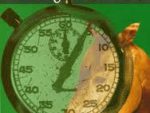



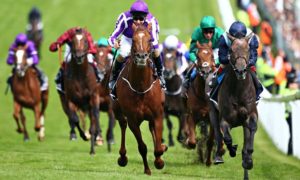
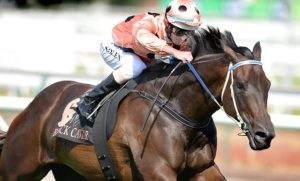
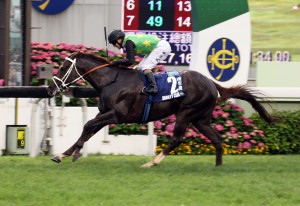
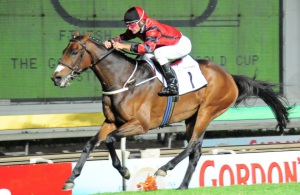
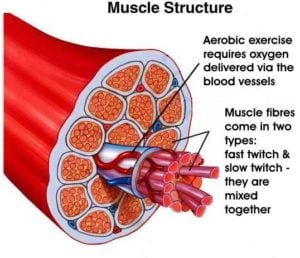
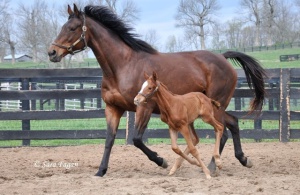
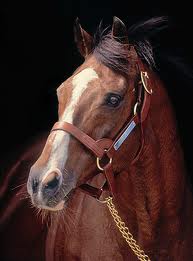

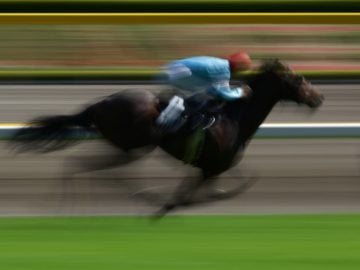
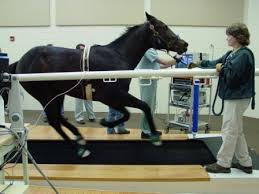
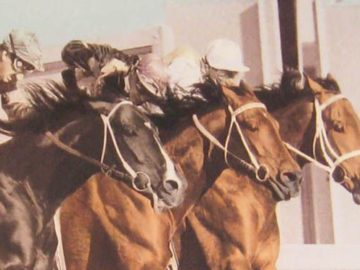

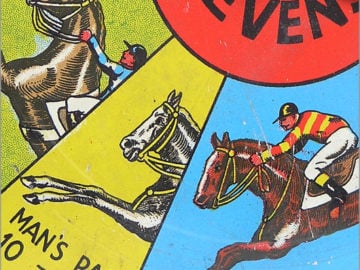






Here in the UK my selections. The sire has to get the distance IE Dubawi gets 10f but not 12f.
There has to be stamina on dam side.
IE Al Husn (Dubawi – Sea the Stars) won Group races at 10f but not at 12f